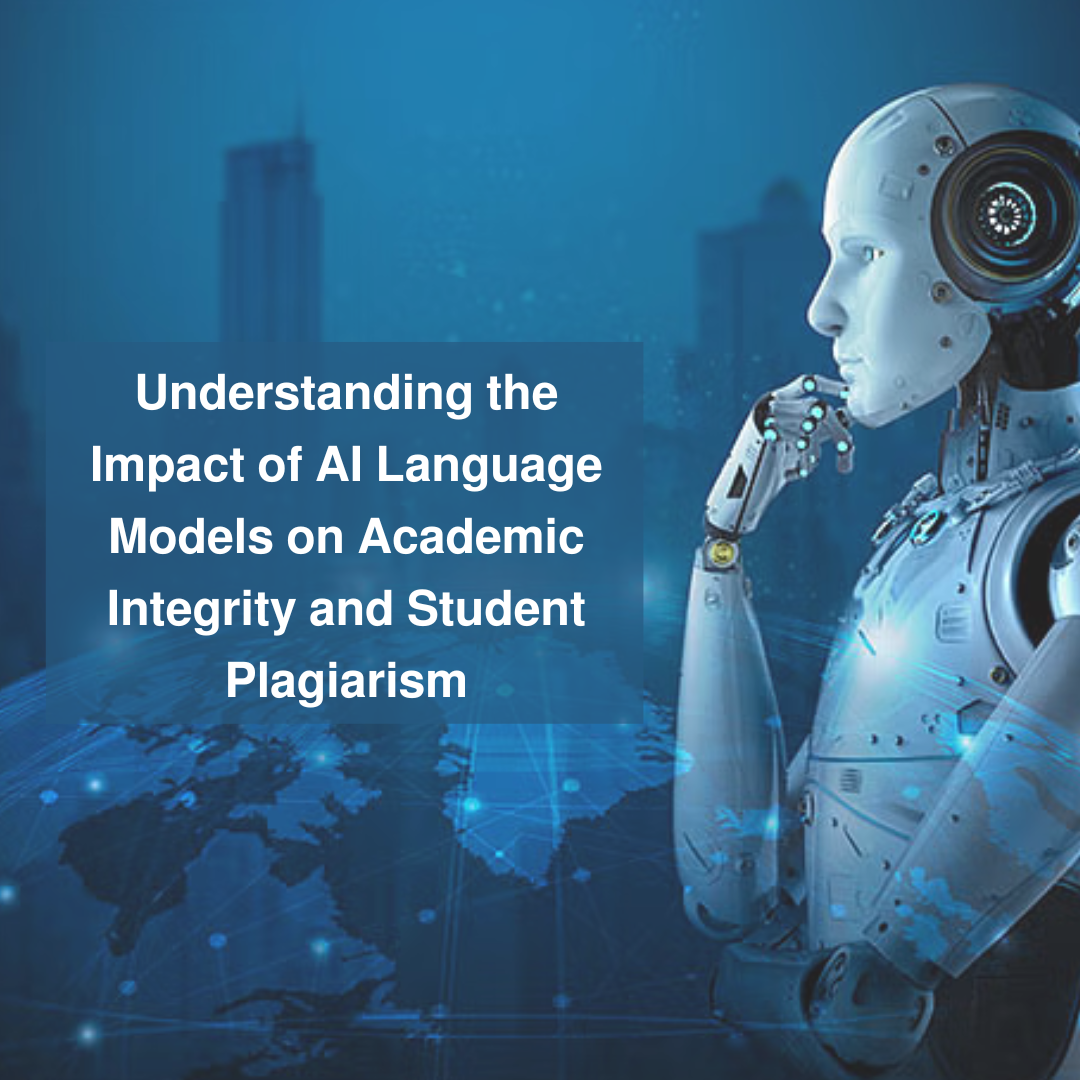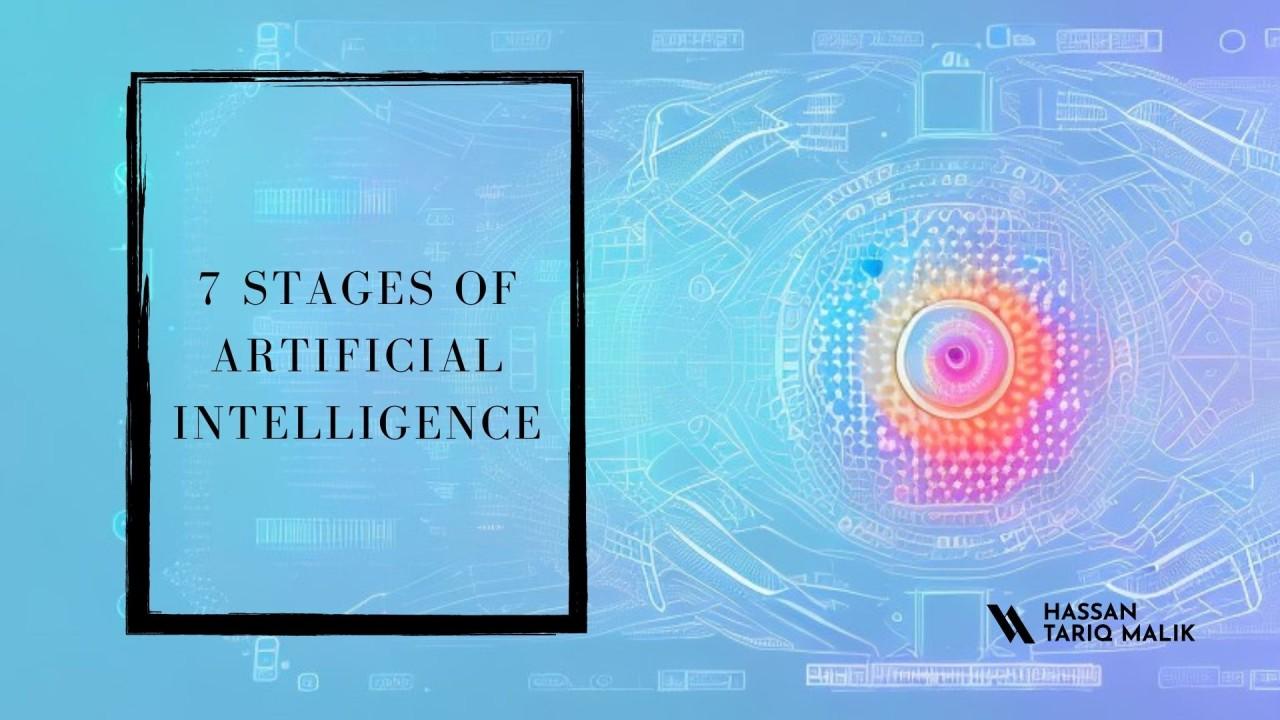𝗨𝗻𝗱𝗲𝗿𝘀𝘁𝗮𝗻𝗱𝗶𝗻𝗴 𝘁𝗵𝗲 𝗜𝗺𝗽𝗮𝗰𝘁 𝗼𝗳 𝗔𝗜 𝗟𝗮𝗻𝗴𝘂𝗮𝗴𝗲 𝗠𝗼𝗱𝗲𝗹𝘀 𝗼𝗻 𝗔𝗰𝗮𝗱𝗲𝗺𝗶𝗰 𝗜𝗻𝘁𝗲𝗴𝗿𝗶𝘁𝘆 𝗮𝗻𝗱 𝗦𝘁𝘂𝗱𝗲𝗻𝘁 𝗣𝗹𝗮𝗴𝗶𝗮𝗿𝗶𝘀𝗺
The proliferation of generative artificial intelligence (AI) language models is reshaping the educational landscape, influencing students' approaches to creativity and critical thinking. In a comprehensive review by me, I identified the problematic effects of AI language models on academic integrity and student plagiarism.
You can read the research paper here: https://www.academia.edu/103839294/The_Impact_of_AI_Language_Models_on_Academic_Integrity_and_Student_Plagiarism_Research
𝗧𝗵𝗲 𝗚𝗼𝗼𝗱 𝗮𝗻𝗱 𝘁𝗵𝗲 𝗕𝗮𝗱
1. Learning Tools: AI language models serve as valuable tools for students to explore diverse perspectives, acquire knowledge, and enhance research skills.
2. Concerns and Challenges: Instances of students leveraging AI, like Chat GPT, for plagiarism raise questions about originality and critical thinking.
𝗥𝗲𝘀𝗽𝗼𝗻𝘀𝗶𝗯𝗹𝗲 𝗨𝘀𝗮𝗴𝗲 𝗥𝗲𝗰𝗼𝗺𝗺𝗲𝗻𝗱𝗮𝘁𝗶𝗼𝗻𝘀
1. Educational Guidance: Institutions should provide clear guidelines on responsible AI usage.
2. Balancing Act: Striking a balance between innovation and maintaining academic integrity is crucial.
#AIinEducation #AcademicIntegrity #ChatGPT #StudentPlagiarism #EdTech #CriticalThinking #ResponsibleAI #HigherEd #InnovationInEducation #ResearchSkills #hassantariqmalik
The proliferation of generative artificial intelligence (AI) language models is reshaping the educational landscape, influencing students' approaches to creativity and critical thinking. In a comprehensive review by me, I identified the problematic effects of AI language models on academic integrity and student plagiarism.
You can read the research paper here: https://www.academia.edu/103839294/The_Impact_of_AI_Language_Models_on_Academic_Integrity_and_Student_Plagiarism_Research
𝗧𝗵𝗲 𝗚𝗼𝗼𝗱 𝗮𝗻𝗱 𝘁𝗵𝗲 𝗕𝗮𝗱
1. Learning Tools: AI language models serve as valuable tools for students to explore diverse perspectives, acquire knowledge, and enhance research skills.
2. Concerns and Challenges: Instances of students leveraging AI, like Chat GPT, for plagiarism raise questions about originality and critical thinking.
𝗥𝗲𝘀𝗽𝗼𝗻𝘀𝗶𝗯𝗹𝗲 𝗨𝘀𝗮𝗴𝗲 𝗥𝗲𝗰𝗼𝗺𝗺𝗲𝗻𝗱𝗮𝘁𝗶𝗼𝗻𝘀
1. Educational Guidance: Institutions should provide clear guidelines on responsible AI usage.
2. Balancing Act: Striking a balance between innovation and maintaining academic integrity is crucial.
#AIinEducation #AcademicIntegrity #ChatGPT #StudentPlagiarism #EdTech #CriticalThinking #ResponsibleAI #HigherEd #InnovationInEducation #ResearchSkills #hassantariqmalik
𝗨𝗻𝗱𝗲𝗿𝘀𝘁𝗮𝗻𝗱𝗶𝗻𝗴 𝘁𝗵𝗲 𝗜𝗺𝗽𝗮𝗰𝘁 𝗼𝗳 𝗔𝗜 𝗟𝗮𝗻𝗴𝘂𝗮𝗴𝗲 𝗠𝗼𝗱𝗲𝗹𝘀 𝗼𝗻 𝗔𝗰𝗮𝗱𝗲𝗺𝗶𝗰 𝗜𝗻𝘁𝗲𝗴𝗿𝗶𝘁𝘆 𝗮𝗻𝗱 𝗦𝘁𝘂𝗱𝗲𝗻𝘁 𝗣𝗹𝗮𝗴𝗶𝗮𝗿𝗶𝘀𝗺
The proliferation of generative artificial intelligence (AI) language models is reshaping the educational landscape, influencing students' approaches to creativity and critical thinking. In a comprehensive review by me, I identified the problematic effects of AI language models on academic integrity and student plagiarism.
You can read the research paper here: https://www.academia.edu/103839294/The_Impact_of_AI_Language_Models_on_Academic_Integrity_and_Student_Plagiarism_Research
𝗧𝗵𝗲 𝗚𝗼𝗼𝗱 𝗮𝗻𝗱 𝘁𝗵𝗲 𝗕𝗮𝗱
1. Learning Tools: AI language models serve as valuable tools for students to explore diverse perspectives, acquire knowledge, and enhance research skills.
2. Concerns and Challenges: Instances of students leveraging AI, like Chat GPT, for plagiarism raise questions about originality and critical thinking.
𝗥𝗲𝘀𝗽𝗼𝗻𝘀𝗶𝗯𝗹𝗲 𝗨𝘀𝗮𝗴𝗲 𝗥𝗲𝗰𝗼𝗺𝗺𝗲𝗻𝗱𝗮𝘁𝗶𝗼𝗻𝘀
1. Educational Guidance: Institutions should provide clear guidelines on responsible AI usage.
2. Balancing Act: Striking a balance between innovation and maintaining academic integrity is crucial.
#AIinEducation #AcademicIntegrity #ChatGPT #StudentPlagiarism #EdTech #CriticalThinking #ResponsibleAI #HigherEd #InnovationInEducation #ResearchSkills #hassantariqmalik
0 Kommentare
0 Anteile



